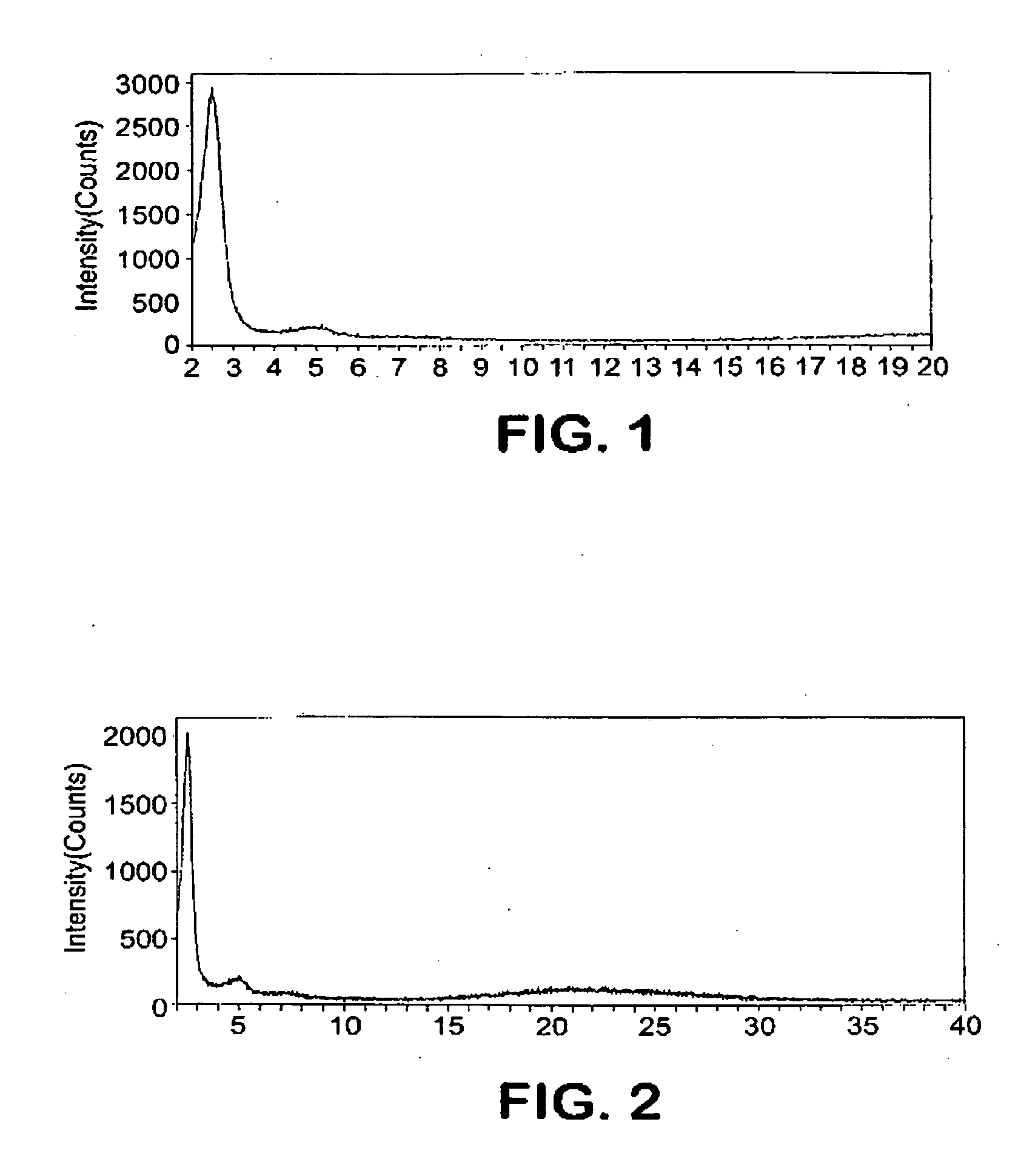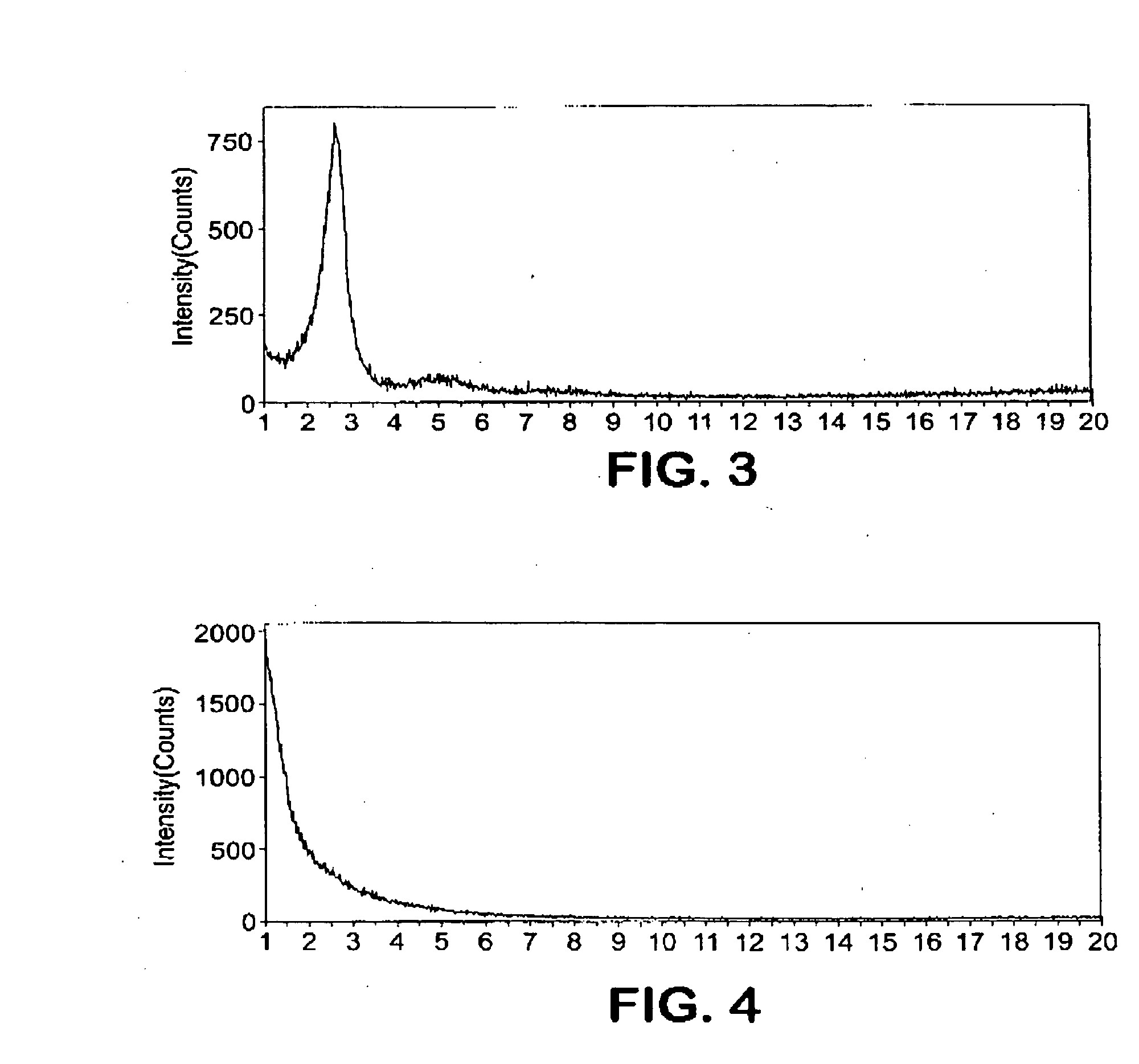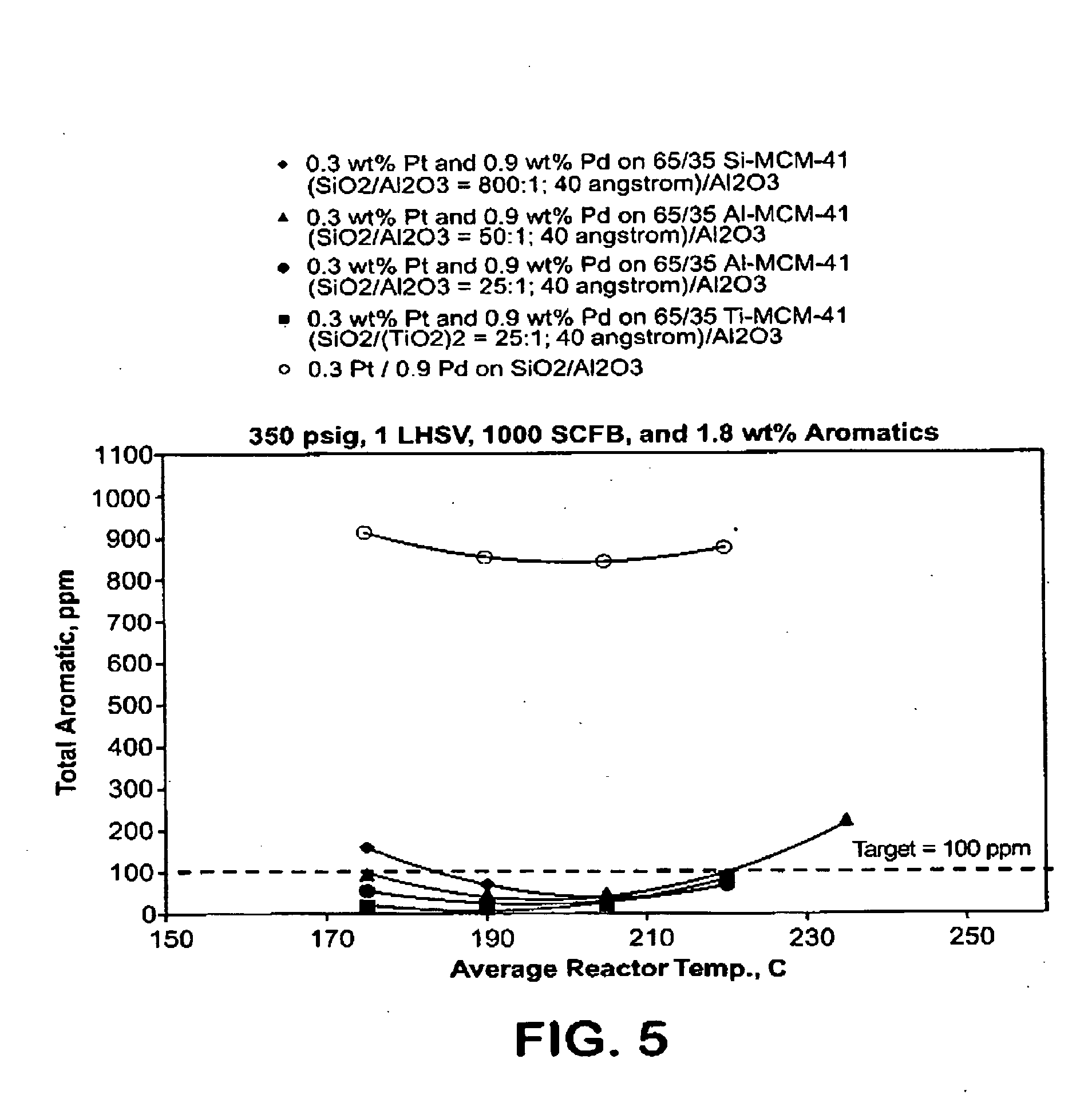Aromatic hydrogenation catalysts
- Summary
- Abstract
- Description
- Claims
- Application Information
AI Technical Summary
Benefits of technology
Problems solved by technology
Method used
Image
Examples
example 1
Preparation of Small Pore Ti-MCM-41 with SiO2 / (TiO2)˜50 / 1
[0054]A mixture was prepared from 620 g of water, 250 g of Tetraethylammonium Hydroxide(TEAOH) 35% solution, 370 g of ARQUAD 12 / 37 solution (a C12 surfactant, available from Akzo-Nobel), 38.4 g of Titanium Ethoxide in 40 g of Ethanol solution, and 170 g of Ultrasil. The mixture had the following molar composition:
SiO2 / (TiO2)2~50 / 1H2O / SiO2~22TEAOH / Surfactant~1SiO2 / Surfactant~6
[0055]The mixture was reacted at 265° F. (129.5° C.) in a 2-liter autoclave with stirring at 90 RPM for 36 hours. The product was filtered, washed with deionized (DI) water, followed by drying at 250° F. (120° C.) and calcination at 1000° F. (540° C.) for 6 hrs. FIG. 1 shows the XRD pattern of the as-synthesized material. FIG. 1 shows a typical signature for a pure phase of small pore (2 / g.
example 2
Preparation of Small Pore Ti-MCM-41 with SiO2 / (TiO2)2˜50 / 1
[0056]A mixture was prepared from 620 g of water, 250 g of Tetraethylammonium Hydroxide(TEAOH) 35% solution, 370 g of ARQUAD 12 / 37 solution, 38.4 g of Titanium Ethoxide in 40 g of Ethanol solution, and 170 g of Ultrasil. The mixture had the following molar composition:
SiO2 / (TiO2)2~50 / 1H2O / SiO2~22TEAOH / Surfactant~1SiO2 / Surfactant~6
[0057]The mixture was reacted at 212° F. (100° C.) in a 2-liter autoclave with stirring at 90 RPM for 48 hours. The product was filtered, washed with deionized (DI) water, followed by drying at 250° F. (120° C.) and calcination at 1000° F. (540° C.) for 6 hrs. FIG. 2 shows the XRD pattern of the as-synthesized material, which displays typical signature for a pure phase small pore (2 / g.
example 3
Preparation of Small Pore Ti-MCM-41 with SiO2 / (TiO2)2˜50 / 1
[0058]A mixture was prepared from 805 g of water, 250 g of Tetraethylammonium Hydroxide(TEAOH) 35% solution, 185 g of ARQUAD 12 / 37 solution, 61 g of n-Decylmethylammonium Bromide, 38.4 g of Titanium Ethoxide in 40 g of Ethanol solution, and 170 g of Ultrasil. The mixture had the following molar composition:
SiO2 / (TiO2)2~50 / 1H2O / SiO2~22TEAOH / Surfactant~1SiO2 / Surfactant~6
[0059]The mixture was reacted at 212° F. (100° C.) in a 2-liter autoclave with stirring at 90 RPM for 36 hours. The product was filtered, washed with deionized (DI) water, followed by drying at 250° F. (120° C.) and calcination at 1000° F. (540° C.) for 6 hrs. FIG. 3 shows the XRD pattern of the as-synthesized material, which shows a typical signature for a pure phase of small pore (2 / g.
PUM
| Property | Measurement | Unit |
|---|---|---|
| Diameter | aaaaa | aaaaa |
| Fraction | aaaaa | aaaaa |
| Pore size | aaaaa | aaaaa |
Abstract
Description
Claims
Application Information
 Login to View More
Login to View More - R&D
- Intellectual Property
- Life Sciences
- Materials
- Tech Scout
- Unparalleled Data Quality
- Higher Quality Content
- 60% Fewer Hallucinations
Browse by: Latest US Patents, China's latest patents, Technical Efficacy Thesaurus, Application Domain, Technology Topic, Popular Technical Reports.
© 2025 PatSnap. All rights reserved.Legal|Privacy policy|Modern Slavery Act Transparency Statement|Sitemap|About US| Contact US: help@patsnap.com



